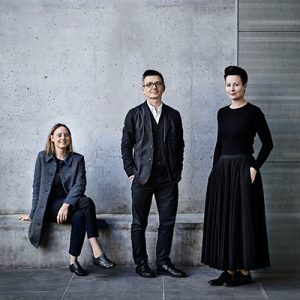The Institute is excited to announce the recently elected members for Chapter Councils, National Council and NT, Qld and Vic Chapter Presidents for 2018. Congratulations to our new Council members and thank you to our outgoing members for their important contributions in 2017.
NATIONAL COUNCIL
Congratulations to the Institute’s Nationally-Elected National Councillors who represent the whole membership on National Council.
Vanessa Bird (Vic) – Nationally-Elected Councillor
Justin Hill (International) – Nationally-Elected Councillor
Amy Muir – Victorian Chapter President
Jenny Culgan – NT Chapter President
Paul Trotter – Queensland Chapter President
Philip Leeson (Nominee) – ACT Chapter President
ACT
2018 elected ACT Chapter Council members:
Philip Leeson (Nominee) – ACT Chapter President
Yuri Leong – Chapter Councillor
Shoba Cole – Chapter Councillor
John Ting – Chapter Councillor
Jane Cassidy – Chapter Councillor
We would also like to thank outgoing Chapter Council members for their valued time and contribution to the ACT Chapter:
Tony Trobe
Andrew Wilson
Alan Morschel
Michael Jasper
NSW
2018 elected NSW Chapter Council members:
Elizabeth Carpenter – Chapter Councillor
Liz Westgarth – Chapter Councillor
David Tickle – Chapter Councillor
Kathlyn Loseby – Chapter Councillor
Gemma Savio – Chapter Councillor
We would also like to thank outgoing Chapter Council members for their valued time and contribution to the NSW Chapter:
Ashley Dunn
Steven Donaghey
Alex Kibble
Peter Smith
Sarah Aldridge
Phuong Le
Joseph O’Meara
NORTHERN TERRITORY
2018 elected NT Chapter Council members:
Jenny Culgan – NT Chapter President
Rossi Kourounis – Chapter Councillor
Edward Farinha – Chapter Councillor
Flynn Carr – Chapter Councillor
Sarah Williamson – Chapter Councillor
Miriam Wallace – Chapter Councillor
We would also like to thank outgoing Chapter Council members for their valued time and contribution to the NT Chapter:
Andrew Broffman
Richard Layton
Keith Savage
QUEENSLAND
2018 elected Queensland Chapter Council members:
Paul Trotter – Queensland Chapter President
Paul Worroll – Chapter Councillor
Christina Cho – Chapter Councillor
Ingrid Marshall – Chapter Councillor
Roger Mainwood – Chapter Councillor
Louisa Gee – Chapter Councillor
Leah Gallagher (Nominee) – Chapter Councillor
We would also like to thank outgoing Chapter Council members for their valued time and contribution to the Queensland Chapter:
Bruce Wolfe
Catherine Baudet
Shawn Godwin
Rebecca Moore
SOUTH AUSTRALIA
2018 elected SA Chapter Council members:
Tony Giannone – Chapter Councillor
Adam Hannon – Chapter Councillor
Kirstie Coultas – Chapter Councillor
Anthony Coupe – Chapter Councillor
We would also like to thank outgoing Chapter Council members for their valued time and contribution to the SA Chapter:
Vanessa Amodeo
Dino Vrynios
TASMANIA
2018 elected Tasmanian Chapter Council members:
Sophie Bence – Chapter Councillor
Cath Hall – Chapter Councillor
Genevieve Lilley – Chapter Councillor
Paul Wakelam – Chapter Councillor
Gaetano Palmese – Chapter Councillor
We would also like to thank outgoing Chapter Council members for their valued time and contribution to the Tasmanian Chapter:
Ceridwen Owen
Daniel Lane
VICTORIA
2018 elected Victorian Chapter Council members:
Amy Muir – Victorian Chapter President
Rosemary Byrne – Chapter Councillor
Thomas Mckenzie – Chapter Councillor
Keith Westbrook – Chapter Councillor
Jocelyn Chiew – Chapter Councillor
Ian Briggs – Chapter Councillor
We would also like to thank outgoing Chapter Council members for their valued time and contribution to the Victorian Chapter:
Peter Malatt
Fiona Winzar
Adam Pustola
WESTERN AUSTRALIA
2018 elected WA Chapter Council members:
Sally Matthews – Chapter Councillor
David Hillam – Chapter Councillor
Louise Johnston – Chapter Councillor
Rebekah Stuber – Chapter Councillor
Clancy White – Chapter Councillor
We would also like to thank outgoing Chapter Council members for their valued time and contribution to the WA Chapter:
Nic Brunsdon
Peter Hobbs
Kate Hislop
INTERNATIONAL CHAPTER COMMITTEE
2018 elected International Chapter Committee members:
Justin Hill – Committee Member
Hank Koning – Committee Member
Grant Marani – Committee Member
Annelise Tiller – Committee Member
Vui Choong – Committee Member
We would also like to thank outgoing International Committee members for their valued time and contribution to the International Committee:
Dik Jarman




